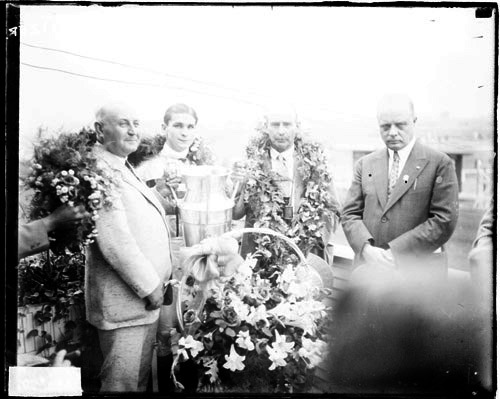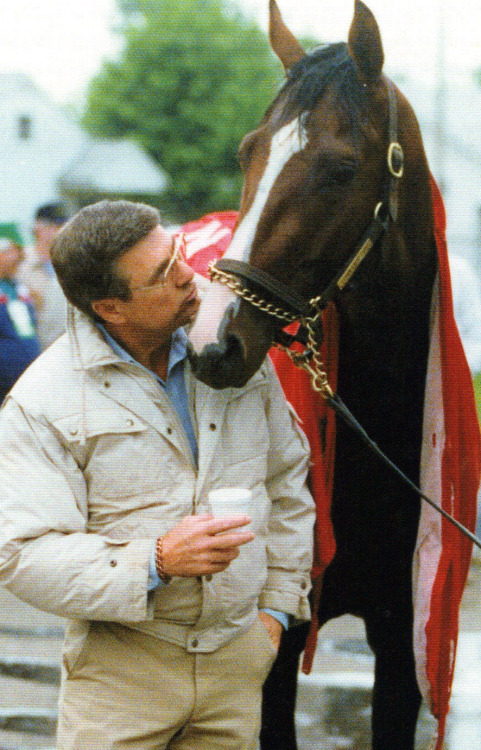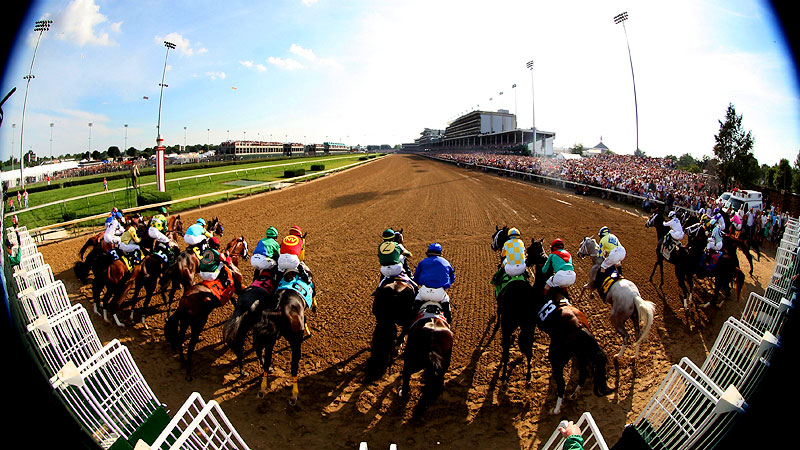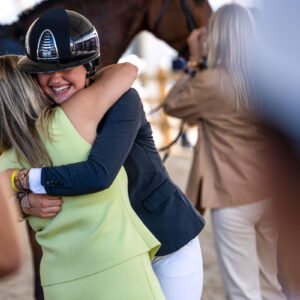The Kentucky Derby is like a tattoo on Uncle Sam—it’s loud, proud, and permanently American.
What’s so unique about the Kentucky Derby is how little has changed since the inaugural Run for the Roses in 1875—same place (Churchill Downs), same time (first Saturday in May), same breed (thoroughbred) at the same age (3yo), similar fashion sensibilities (for better or worse), and patrons still guzzle down bourbon-laced mint juleps by the gallon and pretend everything will ok.
Now that Kentucky Derby week is once again upon us, let’s take a stroll down the backstretch of the “most exciting two minutes in sports”…

Louisville’s Churchill Downs in 1901.

Churchill Downs today.

The Churchill Downs Clubhouse on Derby Day, 1914. Courtesy of the R. G. Potter Collection, University of Louisville Photographic Archives.

Jockey Jimmy Winkfield won the 1902 Derby with Alan-A-Dale. Banned from other sports, African-American jockeys dominated racing at the turn of the century. (Kentucky Derby Museum/Churchill Downs)


History was made at the 1915 edition when Regret became the first filly to win the Kentucky Derby.

Jockey Albert Johnson and the connections of 1926 Kentucky Derby winner Bubbling Over, looking quite unimpressed by the whole deal. Sorry for the inconvenience, gents. (Library of Congress)

1937 winner War Admiral gets some love from his groom.

1948 was the year of the great Citation, ridden by a jubilant Eddie Arcaro. No jockey has won this race more than Arcaro, who rode 5 winners.

1953 Kentucky Derby, Dark Star (No.10, on the rail) handed the great Native Dancer the only loss of his career. (Oldham Co. Historical Society)

1956 champ Needles gets some pre-race advice from his pal.

Sometimes you win…
.jpg)
Sometimes you lose (and booze).

To many, the Derby is more about fashion than horses. A journalist from the Courier-Journal in 1901 stated, “The seats in the grandstand were filled with gaily dressed women and men. The mass of green, pink, red, yellow, blue, all the colors of the rainbow, blending into one harmonious whole was as beautiful a sight as His Eminence in the lead.” Not much has changed.

High fash, for the win, place and show.

It’s your old piano teacher! This shot from 1963 will haunt you in your dreams.

jockey Bob Ussery celebrates aboard 1968 Kentucky Derby winner Dancer’s Image with owner Peter Fuller, left, and trainer Louis C. Cavalaris Jr., right. The good times were fleeting as a few days later the horse was disqualified when traces of bute were found in his urine. The purse money was awarded to runner-up Forward Pass. It is the only time a Derby winner has been DQ’d. Cavalaris emphatically denied any wrongdoing, claiming he was being “set up.” (AP Photo/File)

Secretariat wins for fun in 1973. He finished the 1 1/4 mile race in 1:59 2/5, still the fastest time in history.

Secretariat says wassup. (AP Photo)

1977 winner Seattle Slew with jockey Jean Cruguet. The colt went on to sweep the Triple Crown.

Affirmed over Alydar in 1978, a common theme that year. ( Photo by Frank Anderson, Lexington Herald-Leader.)

Popular 1989 champ Sunday Silence with jockey Pat Valenzuela and trainer Charlie Whittingham (right).

Trainer Carl Nafzger nuzzling 1990 Derby winner Unbridled.

Fan favorite Smarty Jones wore the rose blanket in 2004. (Sports Illustrated)

This is the tamest picture of the Kentucky Derby infield online. (Getty)

Most Kentucky Derbies are won or lost at the start. Here in 2012, winner I’ll Have Another (post #19) broke cleanly from the far outside. (ESPN)

Cal-bred California Chrome strides to victory in the 2014 Kentucky Derby with Victor Espinoza aboard. (David J. Phillip/AP Photo)


 April 2, 2015
April 2, 2015 


























